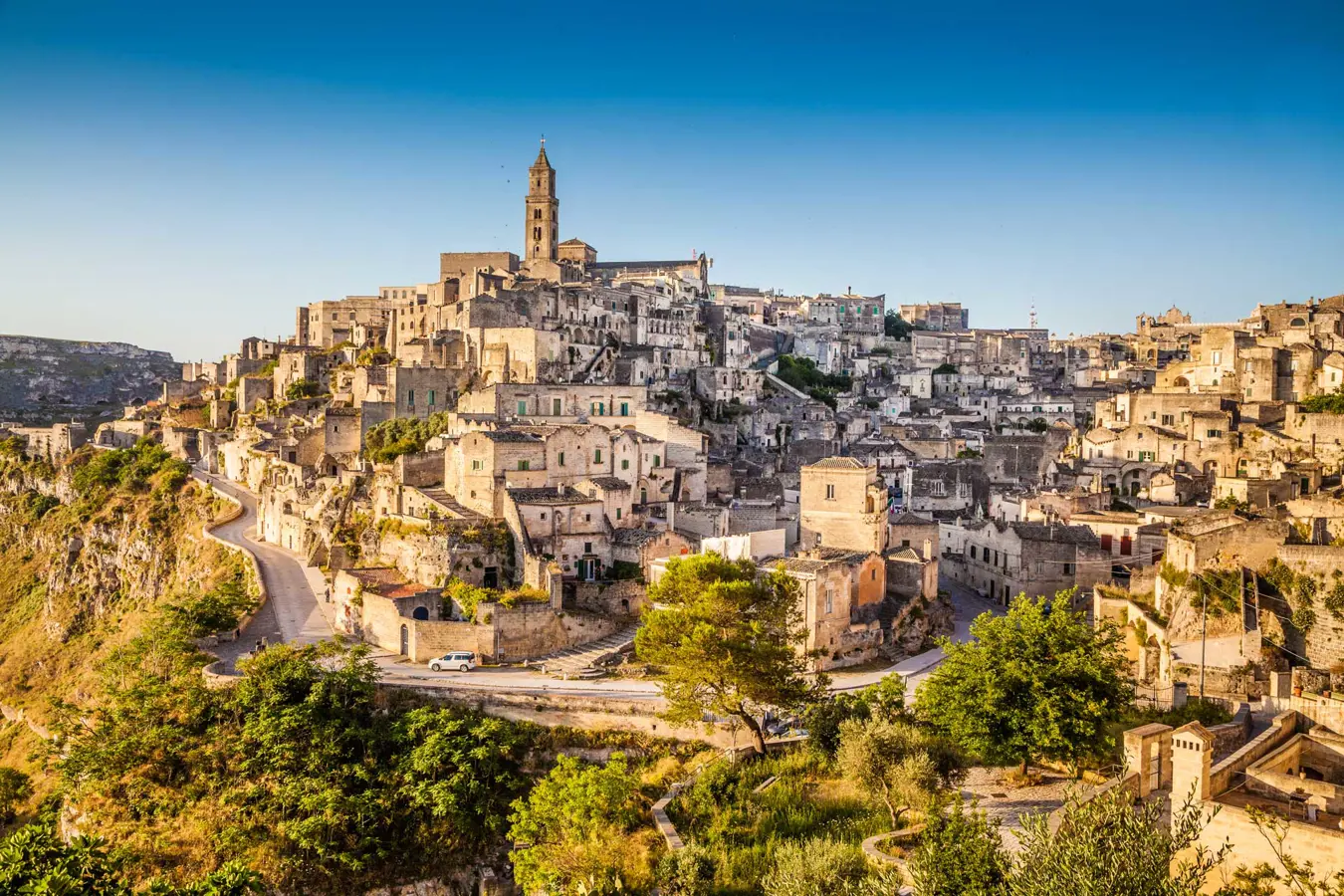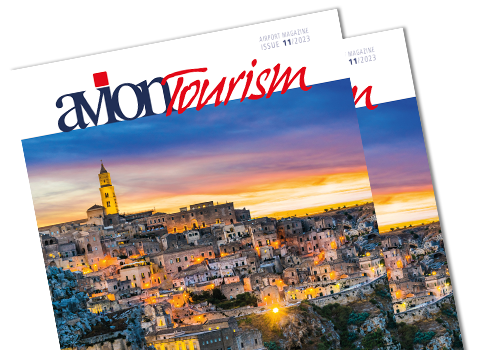The centuries-old beech forests of the Cozzo Ferriero Forest (Pollino National Park)
Italy is one of the two countries in the world, together with China, to hold the highest number of sites declared World Heritage by UNESCO, a cultural and natural heritage that represents the highest legacy of the past to be transmitted intact to future generations: in fact, there are 55 places chosen in the Italian Peninsula, of which 5 are reserved for natural sites.
Among these natural sites is the Pollino National Park, declared a World Heritage Site in 1988, a green and unspoiled gem of Southern Italy. Lying between the regions of Calabria and Basilicata, the Park is the largest protected area in Italy and one of the largest in Europe. Entering the Pollino National Park is a discovery that excites at every step along each of the numerous paths in its almost 2000 hectares of surface: for the lush and rare vegetation, for the unique fauna, for the incomparable views.

Pollino Massif. Photo: Copyright © Sisterscom.com / Shutterstock
The site owes its name to the imposing Pollino Massif located on the border between the two regions, although the protected area extends from the Cozzo del Pellegrino (also known as Dorsale del Pellegrino) to the northern end of the Paolano Apennines. The flora amazes with some specimens that date back to prehistoric times, such as the Loricato Pine, which is also the symbol of the Park and is confidentially called 'Zu Peppu', like an old patriarch. But many other species are found there: among the tall trees dominates the beech tree which at a height of about 1200 meters gives rise to the expanse of the Centuries-Old Beech Forests of the Cozzo Ferriero Forest, the highlight in this case of the World Heritage Site, beeches that in some cases take on particular, twisted shapes, so much so that they are called 'snake trees' and that amaze every visitor.

Pollino Park. Photo: Copyright © Sisterscom.com / Shutterstock
Various types of spontaneous oaks also grow, such as the Holm Oak, the Downy Oak, the Oak as well as some species of maple, such as the Mountain Maple, the Hungarian Maple, the Neapolitan Maple, the Field Maple, to which are added the Black Pine and the extraordinary Silver Fir. In such an extensive forest there is no shortage of shrubs with their intoxicating aromas, such as the Common Juniper , the Red Juniper, the Myrtle, the Tree Heather or the Plum and many others.

Pollino Park. Photo: Copyright © Sisterscom.com / Shutterstock
And in addition to herbaceous and medicinal plants with Lavender, Sage, Oregano, Thyme of various species, a riot of flowers explodes in the area with the splendid bluebells of Pollino, the Wild Lily, the Woolly Buttercup, the Pilgrim Peony, the Gentian and all the most varied and colorful species of orchids. In the esplanades you can also find juicy berries: strawberries, blackberries, raspberries, with which the local population makes delicious jams.
The fauna of the Pollino Park is also very rich and varied, with particular species that in some cases represent a 'unicum' throughout the national territory: a singularity is in fact represented by the native species of the Bear Roe Deer, which is accompanied by deer, wild boars, wild cats, dormice, hares, otters in the waterways and wolves, martens, hedgehogs, ending with the very elegant red foxes.
The reptiles of the Pollino Park are all harmless, with the exception of the common viper , and among these are the common tortoise , the pond turtle and the gecko. And even among the birds there is a great and rare variety: the golden eagle, the lark, the goldfinch, the owl, the magpie, the eagle owl, the black woodpecker and the very rare green woodpecker.
The Pollino National Park is an unspoiled paradise jealously preserved in its human and cultural values by the local population. And in this regard, it is necessary to stop in the town of Civita (Cs), where the Albanian community, which arrived in Italy about 500 years ago, still hands down its history and traditions, with the Arbëresh Ethnic Museum, dedicated to Albanian culture, its poetic alleys with stone houses where you can still breathe an atmosphere of other times.

Morano Calabro. Photo: Copyright © Sisterscom.com / Shutterstock
Also among the villages within the Pollino Park, to visit Morano Calabro (Cs), the nativity scene town that is among the hundred most beautiful villages in Italy, with its houses that cascade towards the square where the Collegiate Church of Santa Maria Maddalena stands, with works by Pietro Bernini inside. In Mezzana, a hamlet of San Severino Lucano (Pz) on the northern side of the Pollino Massif, at an altitude of 1537 meters, there is the Sanctuary of the Madonna del Pollino, with the Church and the Pilgrim's House, which welcomes all the devotees who want to stop in this place full of peace, ideal for a spiritual retreat in contact with nature.
How to get to the Pollino National Park by plane: the nearest airports where you can stop are all within about 150-200 kilometers and are the airport of Lamezia Terme about 150 km (travel time about 1 hour and 30 minutes), the airport of Crotone about 200 km (travel time about 2 hours), Naples airport about 214 km away (travel time about 2 hours and 15 minutes), Bari airport about 250 km away (travel time about 2 hours and 50 minutes). From the airports you can continue by car to Rotonda (PZ), or by bus with local bus lines that stop a short distance from Rotonda (with departures also from the cities of Bari and Naples).
Festivals of large shoulder-mounted machines: the "Varia" in Palmi
In 2003, UNESCO approved the Convention for the Protection of the Intangible Cultural Heritage. Intangible intangible assets are those assets that have the function of safeguarding cultural , ethnic, craft traditions that represent the expression and values of groups or communities.
The "Varia" of Palmi, a traditional festival of ancient origin held every year in August in the Calabrian city of Palmi and which is part of the UNESCO Intangible Cultural Heritage, celebrates the religious devotion and craftsmanship of the inhabitants of the city who build large shoulder machines, called "various", to carry the statues of the city's patron saints in processionDuring the festival, the various are carried in procession through the streets of the city, accompanied by songs, music and fireworks. The various are built entirely by hand by the "varari", local artisans who have been handing down the art of building these machines for generations.
The popular festival of the "Varia" in Palmi is held on the last Sunday of August, in honor of Maria Santissima della Sacra Lettera, patron saint of the city. The Varia, a large sacred chariot 17 meters high, is carried on the shoulders of 200 bearers (mbuttaturi), in procession through the streets of the city. On the Varia there are human figures representing the Madonna, the Eternal Father, the twelve Apostles and the angels.
A journey to Italy in the Unesco World Heritage Site: the festivals of the large backpack machines Video: Copyright © MIC Italian Ministry of Culture / Rai Cultura
Calabria is one of the many Italian regions to host important World Heritage sites. To discover more, visit the World Monument Sites in Italy.
Text by Anna Glik
Update by Alisè Vitri
Avion Tourism Magazine
Photo: © Sisterscom.com, Shutterstock
Photo: © Sisterscom.com, Shutterstock
Video: Journey to Italy in the Unesco World Heritage Site Copyright © MIC Italian Ministry of Culture / Rai Cultura
All rights reserved. Reproduction is prohibited. Copyright © Sisterscom.com
Tourist Board and Unesco
www.parconazionalepollino.it - www.unesco.it
Where to sleep near the Pollino Natural Park

Morano Calabro. Photo: Copyright © Sisterscom.com / Shutterstock
The villages around the Pollino National Park are located in the regions of Calabria and Basilicata and are welcoming offering different possibilities for stays. To find the ideal hotel and the best offers , you can search among the towns of interest closest to the Park, indicated below.
Pollino National Park
Hotels in the villages of Basilicata near the World Heritage Site:
Pollino National Park
Hotels in the villages of Calabria near the World Heritage Site:
Pollino National Park
Hotels in the villages of Calabria near the World Heritage Site:
Big cities nearby
Hotels in the big cities near the World Heritage Site:
Hotels in Calabria and Basilicata
Hotels in the two regions where the World Heritage Site is located:
WHERE TO GO in calabria
Recommended tours in Calabria

Scilla, Castello Ruffo, Calabria. Copyright © Sisterscom.com / Shutterstock
REGGIO CALABRIA AND SCILLA
Day tour from Tropea to explore the spectacular Coast of the Gods in Calabria and visit: Reggio Calabria, the National Museum with the two famous Riace Bronzes, Corso Garibaldi for shopping, the characteristic fishing village of Scilla and the ancient fishing village of Chianalea with its castle. The tour includes transportation by air-conditioned bus or minibus and multilingual tour guide. Duration: 1 day. Tour to Scilla and Reggio Calabria.
Matera, Basilicata. Copyright © Sisterscom.com / Shutterstock
MATERA AND THE SASSI
Walking tour of Matera, Italian World Heritage Site and European Capital of Culture 2019. The tour starts in Piazza Vittorio Veneto to admire: the evocative landscape of the Sassi (ancient districts of Sasso Barisano and Sasso Caveoso), the houses in the caves, the churches carved into the rock, the Cathedral on the hill from where you can admire the historic center of Matera and the Murgia Materana Park. Tour with a certified local tour guide. Duration: 2 hours. Guided walking tour of the Sassi and Matera.
You might be interested in
Destinations found in the vicinity
Other destinations
Airports nearby World Heritage Sites in Calabria





















